Early Enumclaw Area Schools and Districts
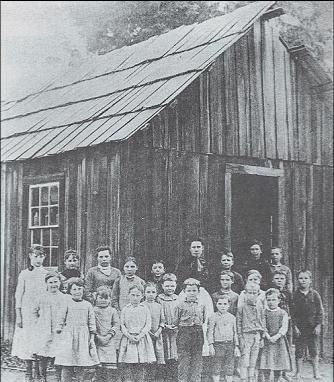
Ellenson was a company village owned by the White River Lumber Company, situated next to what later became the Weyehaeuser mill. For a time, the community had its own school, but in 1909, "The school up at Ellenson closed and the children were hauled down from Ellenson in a horse-drawn wagon by Tougaw Brothers." (14)
Other early schools/districts eventually consolidated with Enumclaw included Newaukem, Wabash, Franklin, Kummer, Black Diamond, Bain, Cumberland, Selleck, and Buckley. Buckley? Yes, Buckley, too.
Other early schools/districts eventually consolidated with Enumclaw included Newaukem, Wabash, Franklin, Kummer, Black Diamond, Bain, Cumberland, Selleck, and Buckley. Buckley? Yes, Buckley, too.
The very early handsplit cedar schoolhouse in Oscela
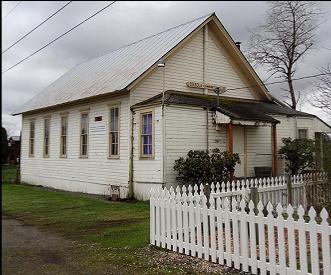
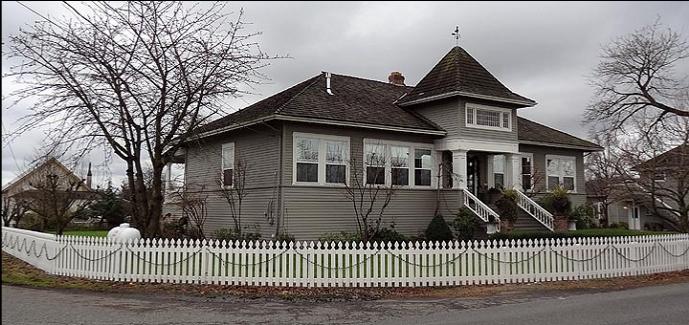
How could Enumclaw, surrounded by country schools before it had any itself acquire them all? How could a tiny village that wanted a tiny school district end up with one that stretched from Auburn to Mt Rainier? How could Enumclaw School District span an area that borders distant districts in Yakima, Kittitas, Pierce, and King Counties and even reaches into two counties itself?
A history of the early schools in the Enumclaw area will set the stage for some answers.
Student Tillie Johnson adds more information in her narrative: "Si Smith used to bring mail from Wilkeson to E. G. White's place, where the Osceola schoolhouse is now, only back in the woods a little way. And it was there that we went to school, Mrs. White teaching us in her home. The pupils were Zina Smith (Si Smith's oldest son), Amy White, Frank Smith, George Vanderbeck, my brother Havelock, and I." (2)
In 1884, the community, now called Osceola, moved their school to a tiny cedar shack. Tillie Johnson continues, "When the shake schoolhouse was built (near the present [Osceola] pickle factory) Si Smith--he was Mrs. White's brother--he was our first teacher." Another student, Emma Ekman, whose family from Sweden had arrived in Osceola in 1892, adds, "The teachers at Osceola school always tried to get a place to board near the school so they wouldn't have to walk too far, as they, of course, had to do the sweeping and make the fire in preparation for the day's session. Miss Anne E. Krumm boarded with us and later Miss Georgia Armstrong. The teachers in those days received only $30 to $40 a month pay. Charles Newman taught in the Osceola school, but he walked out every day from Enumclaw." (3)
A history of the early schools in the Enumclaw area will set the stage for some answers.
Osceola and Boise Creek Schools
Osceola had the first school in the area and included students from neighboring Boise Creek. Edwin White had built a house on Porter's Prairie in 1875 and his daughter Amanda (Amy) reports on the beginnings of a school: "Not long after we came, the James Johnsons came and settled at Boise Creek, not far from the Vanderbecks. They had two children of school age, Tillie and Charlie, so mother decided to keep school, which she did in the living room of the Hicks house in which we were still living. George Vanderbeck, Frank Smith, Tillie and Havelock Johnson, and myself were the scholars." In 1881 the students had another teacher, Miss Lucey/Lucy Thorndyke, who, according to Amy, was from Seattle and "was only fourteen years of age and and knew little more than we did." (1)Student Tillie Johnson adds more information in her narrative: "Si Smith used to bring mail from Wilkeson to E. G. White's place, where the Osceola schoolhouse is now, only back in the woods a little way. And it was there that we went to school, Mrs. White teaching us in her home. The pupils were Zina Smith (Si Smith's oldest son), Amy White, Frank Smith, George Vanderbeck, my brother Havelock, and I." (2)
In 1884, the community, now called Osceola, moved their school to a tiny cedar shack. Tillie Johnson continues, "When the shake schoolhouse was built (near the present [Osceola] pickle factory) Si Smith--he was Mrs. White's brother--he was our first teacher." Another student, Emma Ekman, whose family from Sweden had arrived in Osceola in 1892, adds, "The teachers at Osceola school always tried to get a place to board near the school so they wouldn't have to walk too far, as they, of course, had to do the sweeping and make the fire in preparation for the day's session. Miss Anne E. Krumm boarded with us and later Miss Georgia Armstrong. The teachers in those days received only $30 to $40 a month pay. Charles Newman taught in the Osceola school, but he walked out every day from Enumclaw." (3)
In 1890 a more permanent one-room building was erected on land donated by Lou Smith. This building still stands today, and is currently owned by the Plateau Community Players. (4) Then in 1914 the students moved into their third school, which today is a private residence. (5) (Osceola School District was consolidated with Enumclaw in 1937.)
The second and third Osceola schoolhouses
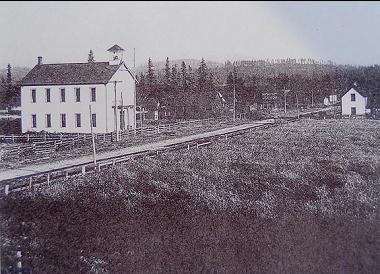
Boise Creek also built its own school, a two-storey building complete with bell tower. It was situated on what is now 244th Avenue East, near the junction of 468th Street. The picture of it above gives you an idea how large a building was needed to serve this thriving settlement.
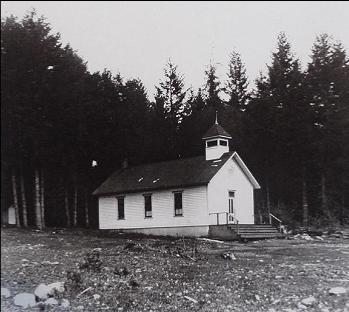
The families of the French district had enough children for a school and needed a teacher. Charles Forget went on a hunt for one, and in 1881, found a young French girl across the White River, Miss L'Ecuier. Since the children spoke only French, she was a lucky find. (6) She conducted classes in the Forget house. Later, the community built the school shown in the above picture.
(One interesting story about the school: In 1904, George and James Carroll shot a large cougar right in front of the school.) (7)
(One interesting story about the school: In 1904, George and James Carroll shot a large cougar right in front of the school.) (7)
French District School (later Firgrove)
Firgrove schoolhouse
Krain School District #137
The Canfield family had the first Krain school in their home in the early 1880s. Then the railroad gave the community 2.5 acres for a school site in 1884. The original hand-split cedar shack was replaced in 1899 with a two-room structure for its two teachers and 100 students. (8) Education was very important to this community, since most of the immigrants spoke no English before arriving.

Krain School in 1898
Flensted School District #131
Until the Flensted community built its own school, their children walked several miles each day to the Krain School. S. L. Sorensen then donated land for a school building. Crop failure of the hops and collapsing prices had brought hard times, so Sorensen started making pottery to pay the bills. He stamped his Danish hometown's name of Flensted on the pots and that's how the Flensted area and the school got their names. (9)

Flensted students, 1910
Coal Creek started as a 10x12-foot hand-split cedar shack. (Where else have we heard a story like this?) There was no stove, as the earliest school terms went only through the summer. But the community grew, and by 1892, it had a post office, general store, and blacksmith shop. Otto Tamm and others set aside land for an upgraded building, organized a school district, and formed a board. The new school opened with twenty students, and closed in 1914. (10)
Meanwhile, Charles Coe was laid off from his job in Enumclaw as a store clerk, so he headed up to Veazie and started a new school in 1905 to house its growing number of students, then 29. (11)
Meanwhile, Charles Coe was laid off from his job in Enumclaw as a store clerk, so he headed up to Veazie and started a new school in 1905 to house its growing number of students, then 29. (11)
Coal Creek (Birch and Veazie Schools)

Veazie schoolhouse and students
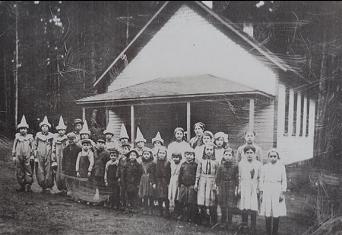
The Buchanan family were the first to settle in the Mud Mountain area, and were soon followed by the Forlers and the Malidores. With eleven children amongst this group, George Buchanan started a school district, with Mr. Collins as teacher for the three-month (summer) school year. After a few terms in his house, they built a school at the foot of Mt. Baldy and called it the Hogan school. (12)
Mud Mountain, Mt. Baldy, and Mt. View Schools
The Moeller family settled on the other side of Mt Baldy, above where the Transfer Station is now. At first they walked over to the Hogan school, but as more people moved in, the Mountain View school opened. In 1909, the "two schools consolidated. The Mud Mountain school moved all of its furniture down to the Mountain View School." Finally, both were consolidated into Enumclaw School District in 1935. (13)
Ellenson School
Mountain View schoolhouse and students